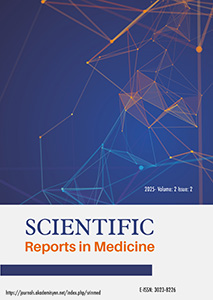Family Planning Among Migrants Living in Adana
DOI:
https://doi.org/10.37609/srinmed.34Keywords:
Contraception, Migrants, Reproductive HealthAbstract
Objective: Family planning plays a crucial role in public health by enabling individuals to control their reproductive choices in a responsible and informed manner. However, migrant populations often face barriers to accessing these services, leading to increased rates of unintended pregnancies and reproductive health complications. This study aims to assess the knowledge, attitudes, and behaviors regarding family planning among migrants living in Adana, Turkey, compared to the local population.
Methods: This cross-sectional study was conducted in January 2025 at Doğankent Family Health Center and Doğankent Migrant Health Center. The study population included individuals aged 15-49 who voluntarily participated. A structured questionnaire was administered through face-to-face interviews to collect sociodemographic data, knowledge levels, and usage patterns of modern family planning methods. The sample size was determined as 220 participants with 95% power and a 5% confidence interval; ultimately, data from 245 individuals were analyzed. Statistical analyses were performed using SPSS 20 software, employing the Kolmogorov-Smirnov test for normality assessment, parametric (t-test), non-parametric (Mann-Whitney U test), and categorical comparisons (chi-square test). A p-value of <0.05 was considered statistically significant.
Results: Of the 245 participants, 143 (58%) were locals and 102 (42%) were migrants. Although knowledge of modern family planning methods was similar in both groups, actual use of modern methods was significantly lower among migrants (38.6% vs. 51.4%; p = 0.049). Barriers to modern contraceptive use included lack of partner consent, limited accessibility and economic constraints.
Downloads
References
World Health Organization (WHO). Family plan-ning/Contraception methods. Geneva: WHO; 2020.
United Nations Population Fund (UNFPA). Modern Contraceptive Methods: Global Usage Statistics. New York: UNFPA; 2021.
Ministry of Health of Turkey. The Population Planning Law No. 557. Ankara: Ministry of Health; 1965.
Hacettepe University Institute of Population Studies. 2018 Turkey Demographic and Health Survey (TDHS). Ankara: HÜNEE; 2019.
Güngör ES, Seval O, İlhan G, Verit FF. Do Syrian Refugees Have Increased Risk for Worse Pregnancy Outcomes? Results of a Tertiary Center in Istanbul. Turk J Obstet Gynecol. 2018;15(1):23-28. doi:10.4274/tjod
Benova L, Owolabi O, Radovich E, Wong KL, Macleod D. Exploring barriers to accessing modern contraception and family planning services: Evidence from global research. Reproductive Health. 2021;18(1):123-135. DOI: 10.1186/s12978-021-01245-5.
Cleland J, Conde-Agudelo A, Peterson H, et al. Contraception and health. The Lancet. 2012;380(9837):149– 156.
WHO. Contraceptive use by method 2019: Data booklet. Geneva: World Health Organization; 2019.
Alp S. Gender roles and family planning methods in Turkey: A cultural analysis. Turkish Journal of Psychology. 2020;35(3):25-38.
United Nations Department of Economic and Social Affairs, Population Division. World Family Planning 2022: Meeting the changing needs for family planning: Contraceptive use by age and method [Internet]. New York: UN DESA; 2022 [cited 2024 Dec 18]. Available from: https://desapublications.un.org/ publications/world-family-planning-2022-meeting-changing-needs-family-planning-contraceptive-use
UNHCR. Refugee Health in Turkey: Challenges and Opportunities. Geneva: UNHCR; 2021.
Güler N, Taşdemir A. Syrian Refugee Women and Family Planning: An Assessment in Turkey. Journal of Migration Health. 2020;1(1):100–105.
Kılınç D, Arslan H. Migrant Women’s Reproductive Health and Contraceptive Use in Turkey. European Journal of Public Health. 2021;31(4):700–707.
Downloads
Published
Issue
Section
License
Copyright (c) 2025 Scientific Reports in Medicine

This work is licensed under a Creative Commons Attribution-NonCommercial-NoDerivatives 4.0 International License.
The Journal and content of this website is licensed under the terms of the Creative Commons Attribution-NonCommercial-NoDerivatives 4.0 International (CC BY-NC-ND 4.0) License. This is in accordance with the Budapest Open Access Initiative (BOAI) definition of open access. The Creative Commons Attribution-NonCommercial-NoDerivatives 4.0 International (CC BY-NC-ND 4.0) allows users to copy, distribute and transmit unmodified article, and make noncommercial use of the article. The CC BY license permits non-commercial re-use of an open access article, as long as the author is properly attributed.

